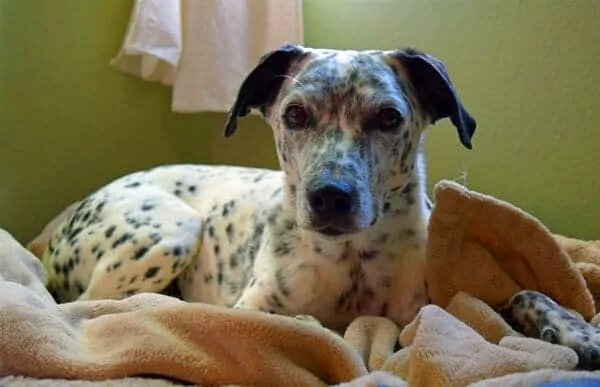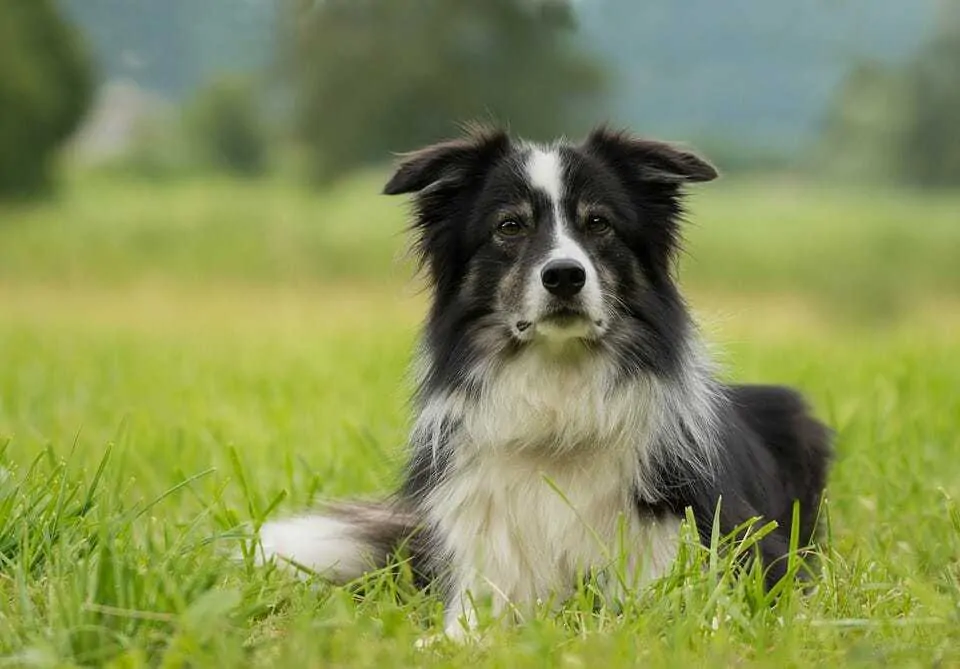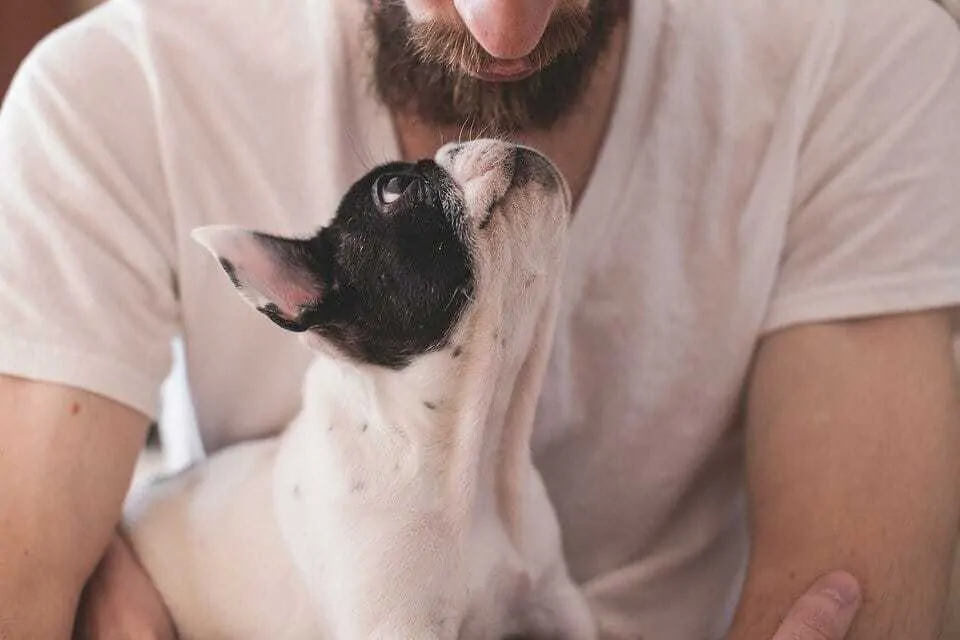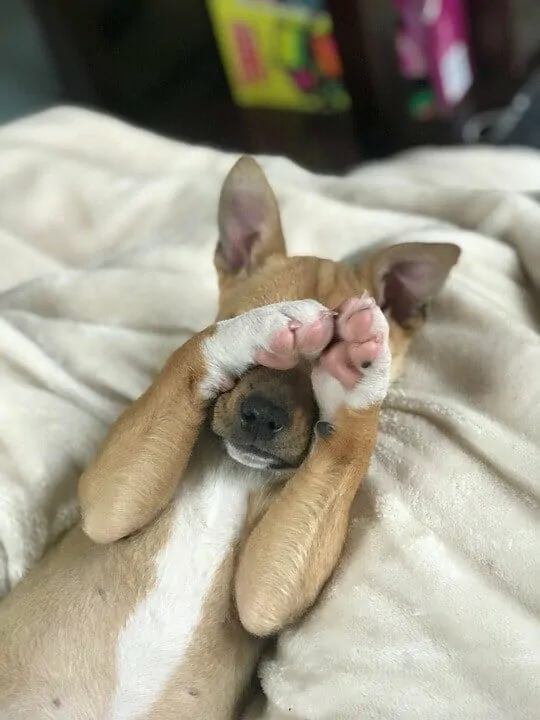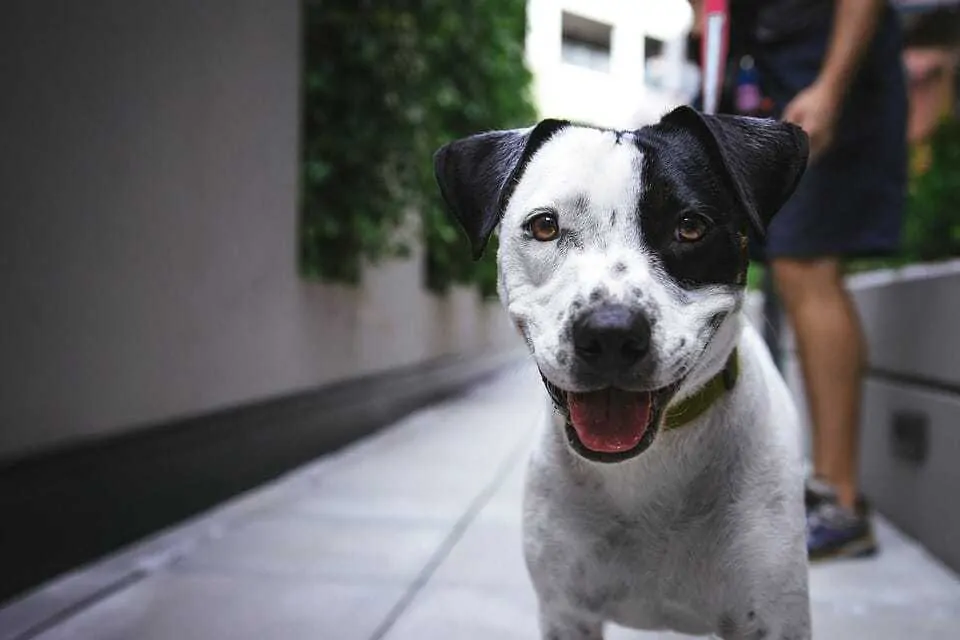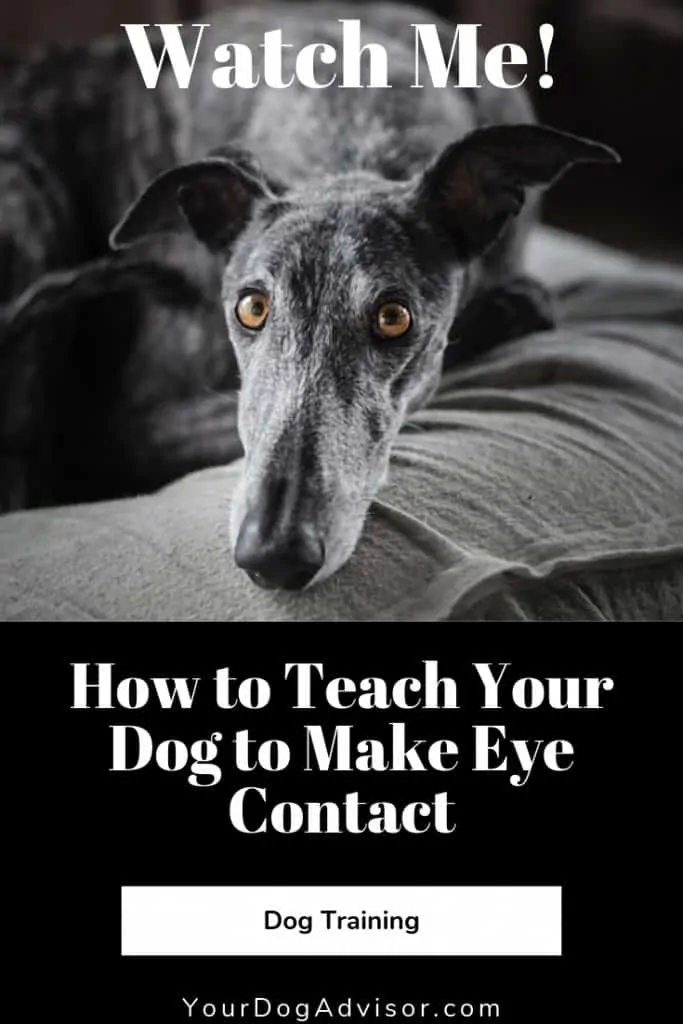Have you ever experienced this: You’re out and about with your dog and you ask them to do something simple, like sit or stay and suddenly it’s as if they have no idea what you’re talking about. You actually wonder to yourself if your dog has gone deaf. After repeating the command a few dozen times and getting very stern, your dog finally obeys but not before embarrassing you in front of everyone around.
While it may appear like your dog has suddenly forgotten everything you’ve ever taught them during a situation like this, the answer is usually more straight forward. More often than not, your dog simply wasn’t paying attention to you.
Maybe they heard you speaking, but were a little too distracted to concentrate on what you were asking them. Or maybe they were so focused on some smell or distant sound that they didn’t even notice you were talking to them.
>>>If your dog frequently fails to give the right behavior when you ask, you may be dealing with one or more of these common training mistakes.
You can’t blame your dog in this situation. The world is an interesting place, especially to an animal who can hear and smell things far beyond what we can detect. Instead of getting frustrated or shouting at your dog, what you need is a command that works to get their attention. Some cue that gets them to look right at you so you can easily follow up with another command. A cue they relate so strongly to positive rewards that they won’t hesitate to react, no matter how distracting the environment.
This is where the watch me command is so useful.
The watch me command is perfect for those times when your dog’s attention is being pulled in a hundred different directions or when you just need them to look at you for a moment. (self-taken)
Contents
What the Watch Me Command Looks Like
Of all the commands you’re likely to teach your dog, this one is probably one of the simplest behaviors, at least in theory. You say “watch me” and your dog looks directly at you. This eye contact not only means your dog is ready to hear the next command, but that their attention isn’t being pulled a hundred different ways by everything going on around you.
Of course, in order to be useful in this kind of distracting environment, your dog needs to associate this cue with amazing, wonderful things. Things they would never want to miss out on.
>>>Need to go back to basics before trying this complex command? Learn how to teach your dog to sit the right way.
Consider how you feel when a coworker or friend is droning on about this or that and how easily it is for you to stop paying attention to what they’re actually saying. Then they suddenly mention something that is important and interesting to you. Even though you have no idea what they were saying a moment before, you are still able to hear that trigger word as clear as day.
This is how we want your dog to react to the watch me cue. It should be instantaneous, so long as they can physically hear you.
>>>Want to learn another great behavior to keep your dog under control in distracting environments? Teach them to heel without a leash.
But we don’t just want our dog to turn toward us when they hear the cue. We want them to make actual eye contact. This assures that their attention is fully on us and allows us to easily direct their next behavior.
By using your watch me cue to get your dog’s attention, you have the ability to get them to focus on your body language. This is useful not only in the agility ring, but in real-life situations that require your dog to react to your movements.
This is important in any situation but can be life-saving in certain instances.
If your dog manages to get in a faceoff with a wild animal, for instance, more than likely your calls for them to leave it or come to you will fall on deaf ears. But a well trained watch me may buy you just enough time to get your dog’s attention on you while you recall them and run in the opposite direction.
This is also the perfect cue for situations that command subtlety. For instance, if your dog responds well to hand cues, you can use your verbal watch me command to get your dog to look at you, then direct them further with a simple gesture.
How to Train the Watch Me Command
Find a training space with few distractions such as your living room. Make sure you have your treat pouch and the highest value training treats you can think of. Hot dogs, boiled chicken, and lunch meat work well for this exercise. If you have a go-to treat for training, find something even better for this special command.
Clicker training works really well for this command since the behavior we are rewarding will be incredibly short-lived at first. The click allows you to pinpoint the exact moment your dog looks at you and helps your dog understand why they are being rewarded faster than a verbal marker will. But, if your dog is not clicker trained, a verbal marker can work, just make sure you pick something you can say quickly like “yes!”
If you struggle to tell when your dog is actually making eye contact as opposed to when they are just looking in your general direction, don’t be afraid to get a little closer. For small dogs, this may mean getting down on the floor to do your training.
Step 1: Wait for eye contact
Get your dog in front of you. They can be sitting or standing, so long as you have their attention.
Take a treat between your fingers and show it to your dog. Then draw your hand up toward your face. Hold your hand a few inches to the side of your face and say “watch me!”
Keep your eyes on your dog. You are waiting for the moment they stop looking at the treat and instead look you in the eyes.
>>>Watch me isn’t the only useful behavior your dog should know. Learn how to train the wait command.
For most dogs, this first look will be nothing more than a quick glance, so be ready with your positive marker for the moment they make eye contact, no matter how brief. But be patient, it may take a couple of minutes before your dog tears their eyes off the treat.
TIP: If your dog is so glued to the treat that they don’t glance at you after a minute or two, try moving your head just slightly. Usually, that motion will steal your dog’s attention long enough for them to glance at you. Be ready to use your positive marker the moment they do.
As soon as your dog glances at you, say your positive marker and give them the treat with lots of praise.
Repeat this process over and over until your dog starts to glance at you the moment you say watch me.
Some dogs naturally avoid eye contact. In the canine world, looking directly at another dog is a threat behavior. If your dog seems shy about looking into your eyes, you may only get the briefest of glances at first. Reward these, no matter how fleeting, and work on shaping a stronger look later on.
Step 2: Increase the distance of the treat
Once your dog starts to glance at you almost immediately after you raise your hand and say the cue, then it’s time to ask them to do just a little more.
This time, when you raise your hand with the treat, hold it a foot or two to the side of your face and then say “watch me!”
Because there is a larger distance between the treat and your eyes, your dog may be more hesitant to look at you (since that will mean taking their eyes off the treat for longer). Just as you did in step 1, patiently wait for them to respond. Don’t repeat the command or try to get your dog’s attention in any other way.
Once your dog looks at you, use your positive marker and give them the treat.
TIP: If your dog doesn’t look at you after a minute, decrease the distance between the treat and your eyes and try again.
Repeat this process until your dog begins responding to the watch me command immediately at this greater distance. Then increase the distance a little more and repeat.
In this video, you’ll see how to get eye contact from your dog by holding a treat near your face and then challenging your dog to continue to offer eye contact as you move the treat farther from your eyes.
Step 3: Removing the hand cue
Once your dog responds by giving eye contact immediately after you say watch me, even with your hand held a couple of feet from your eyes, then you are ready to remove the hand altogether.
With your dog sitting in front of you and their attention on you and your hands at your sides, give your watch me command.
>>>Positivity isn’t only important when teaching the watch me command. Learn why you should avoid punishment training.
Wait until your dog looks you directly in the eye and then use your positive marker and give them a treat with lots of praise. This eye contact should happen relatively fast. If not, you may need to return to step 2 and do a couple dozen more reps before trying this step again.
Repeat the watch me cue with your hands by your side over and over until your dog reliably makes eye contact immediately after you say watch me.
Step 4: Increasing the duration of eye contact
Once your dog is confident in the behavior they need to perform when you give them the watch me cue, you are ready to shape the behavior.
Up to this point, your dog has likely been giving you only a split second of eye contact before searching for the treat they know is coming. But, in order for this behavior to be useful in real life, we need our dog to actually look at us and wait long enough to see or hear the next command.
It can be hard to tell if your dog is making eye contact if they have dark eyes and a dark coat. By moving your head slightly when you think your dog is looking at you, you should be able to tell if they are actually looking into your eyes because their stare will follow yours.
To get this kind of behavior, we are going to shape the eye contact they are giving.
Say watch me just as you were in step 3 with your hand at your side, but this time only reward your dog if they look at you for a full second.
For most dogs, they will glance at you as they were before, then look down at your hand expecting a treat. When your hands don’t move they should look back you in either an attempt to repeat the behavior they know is getting rewarded or as if to ask, “Hey, what the heck!”
>>>Shaping is a great way to get new behaviors from your dog. And so is target training!
If this second look is a little longer than the first, use your positive marker and reward your dog. If not, hold out for that longer look. But do keep in mind, we’re hoping for a look that’s only a tiny bit longer than the original glance.
TIP: If at any point your dog gets frustrated and stops looking at you or attempts other behaviors like sit or down to get a treat, then return to step 3 and reinforce the glance a few dozen more times before attempting this step again.
Repeat this process until you have rewarded multiple full second glances. At that point, begin asking for more and more time by only rewarding looks that last longer than one minute. Start slowly at first by rewarding looks that last just over a minute and then once your dog consistently offers that length of glance, only reward two-second glances and so on.
Continue to work until your dog will offer a solid three or four-second glance each time you say watch me.
In this video, you’ll see how to remove the hand cue from the watch me command and shape the behavior so your dog will give more sustained eye contact.
Step 5: Add distractions
Once your dog understands what a solid watch me command is, you are ready to up the stakes a little.
Start by taking your attention off your dog. Turn away from them or whatever you need to do to get them to stop staring at you and your treats. Once their attention falls to something else, like sniffing the ground, say “watch me!”
The moment your dog looks at you, use your positive marker and reward them. Repeat this process over and over again, rewarding longer and longer eye contact each time until your dog is offering the same length of eye contact they were in step 4.
At that point, you are going to up the stakes again. This time, find an object your dog has little interest in, like a sock, and toss it on the ground next to them. After your dog turns their attention to investigate the object, give your watch me cue. Use your positive marker and reward them once they give you eye contact.
Build up the length of eye contact just as you did before using this object as your distraction. Your dog should offer longer eye contact quicker than they did in the previous step.
Now, find an object your dog is somewhat interested in, like a toy, and toss it on the ground. As they investigate it, ask for eye contact again.
Work through the same progression with this object. Then choose a higher value object and repeat the process. Continue with higher and higher value objects each round.
Your goal is to be able to drop a very high-value object, such as kibble, on the ground and have your dog stop eating to give you eye contact when you give the command. Since you are using a super-high value treat as your reward, they should still give you eye contact right away in anticipation of this higher value reward.
In this video, you’ll see how to introduce distractions and get your dog to offer eye contact even when their attention is on something else.
Step 6: Use the command in more true-to-life situations
Once your dog has mastered the watch me command under the toughest artificial distractions, you are ready to train it in more real-life situations.
You can start by taking your dog somewhere that is mildly distracting, like your backyard. As they sniff around, give your watch me command. Once they comply, use your positive maker and reward them with the same super-high value treats. Repeat this until you are getting reliable, immediate, and sustained eye contact each time.
Now, try the command in a higher distracting environment like on a walk. Make sure you have your super-high value treats with you and do multiple repetitions until your dog is reacting consistently.
Continue Working with this Command Far Beyond the Initial Training Sessions
There’s no limit to where or how often to train this command. Just always be sure to reward your dog with extra special treats or high-value, non-food rewards. For instance, if you take your dog to the dog park, ask them for eye contact before you let them off their leash. Once they give you eye contact, reward them by unclipping the leash and letting them go play with their friends. You can also ask for eye contact before meals and use the tasty bowl of food as their reward for strong eye contact.
Getting your dog to make eye contact in distracting environments is easy as long as you train a solid behavior back at home and introduce distractions at your dog’s pace.
Even after your dog seems like they have mastered eye contact, it is still a good idea to reinforce the behavior with short training sessions between real-life uses. By intermittently providing high-value rewards when your dog completes the command, you’ll continue to reinforce a bomb-proof behavior and build a strong positive association with the command in their mind.
And that’s key if you hope to use watch me as a way to grab your dog’s attention in situations when they seem to have forgotten every other command that they know.

Sara Seitz has spent most of her life in the pet industry and has a bachelors in animal behavior from Colorado State University. Sara started working with dogs and cats as a high schooler at a rural boarding kennel. There she learned a lot about the bad and the ugly of the pet service industry. But not even the toughest day at that job would dissuade Sara from following her dream of working with animals.
In college, Sara got a job at a dog daycare and boarding facility in Fort Collins, Colorado. Her new career provided even more opportunities for learning about dog behavior than her classes did. As general manager of the daycare, Sara helped the company launch a new in-home pet sitting branch and trained to become a certified dog trainer. Between shifts taking care of peoples pets in-home and supervising dogs during playtime at the daycare, Sara organized and taught obedience classes.
Sara has always been passionate about bettering the lives of our canine companions. She soon found that advocating for and educating owners in the power of positive reinforcement training was one of the best ways to help dogs and their owners live happier lives.
